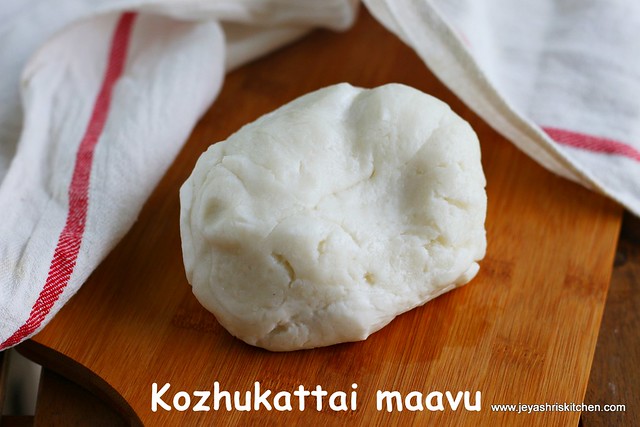
Vinayagar chaturthi | Ganesh chaturthi | pillayar chaturthi, the main prasadh made for this ganesha festival for neivedyam is modak | modakam. Though we make different varities of modakam | kozhukattai, the base for making all kozhukattai is the outer cover made with rice flour. Traditionally the rice flour is processed at home for this festival. I have given the recipe of home made rice flour. Few readers asked me as how to avoid cracks while making the outer cover. When i was explaining them, i felt like making a detailed post on the same. So took the step wise pictures of making the outer cover of the kozhakattai. While i finished making the pictures, suddenly remembered of my very close friend Mythili, she is an expert in making in the outer cover of the modakam. I called her up to add up any tips from her side. Then only she shared her way of making the outer cover for kozhukattai. That was totally different and i never heard about that too. So i added up in this post too. Check out my modakam recipe
Kozhukattai maavu recipe
Preparation Time : 5 mins | Cooking Time : 15 Mins |Serves: -Rice flour | idiyappam flour 1/2 cup
Salt 2 pinches
Sesame oil 2 tsp
For method:4
Raw rice 1/2 cup
Water 1 cup
Salt a pinch
Sesame oil 1 tsp
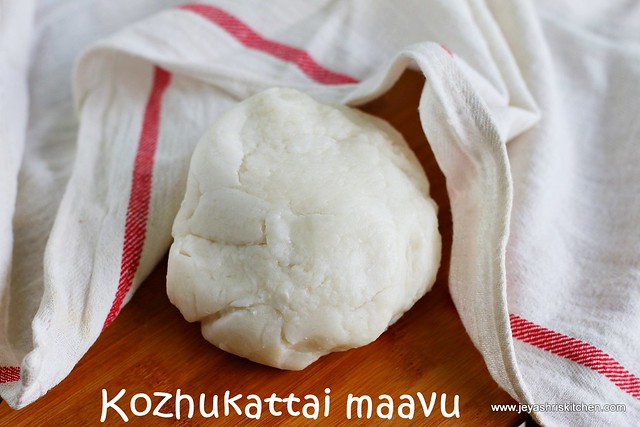
Method 1 :
- In a pan add the water as needed and add the salt and 1 tsp of sesame oil
- When it starts rolling boil, add the processed rice flour or idiyappam flour or store bought rice flour to this.
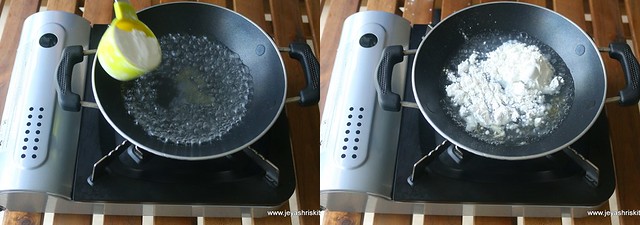
- Keep the flame low and mix the rice flour with the water and cook till the water evaporates and turns a whole mass.
- Cook till comes out leaving the pan. Use a heavy bottomed pan.
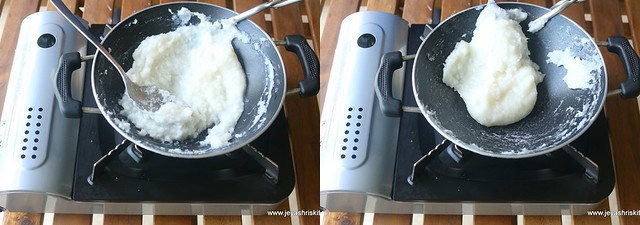
- Always keep the flame low.
- To check it is done or not, wet your hands and touch the dough, if it not sticky then it is done.
- If it sticks then cook for few more minutes.
- When it is warm grease your hands with sesame oil and knead the dough well.
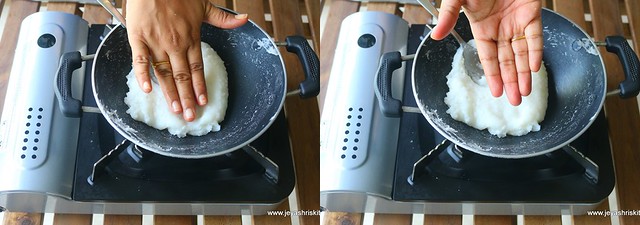
- Take a small portion of dough in hands and roll it into a ball. If it comes out without any crack then it is perfect.
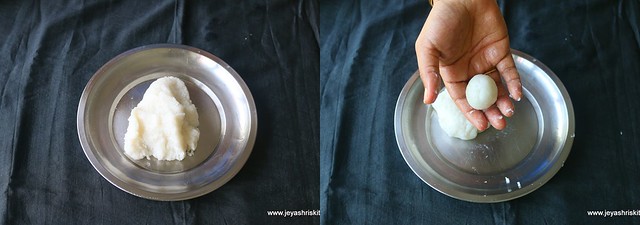
- Keep the dough covered till you use it.
Method: 2
- In a sauce pan add water and salt and sesame oil.
- Allow it to boil nicely. Bring it to a rolling boil.
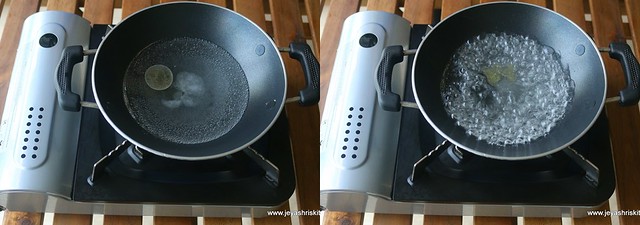
- In a wide bowl keep the dry rice flour. Add the water slowly to the flour.
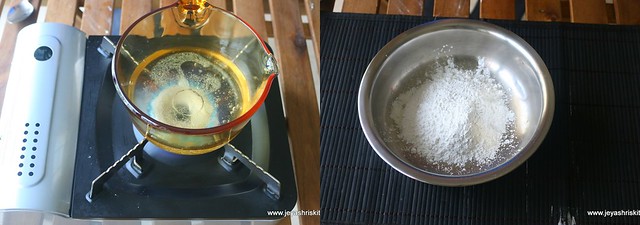
- Mix well with a spoon. Keep it covered.
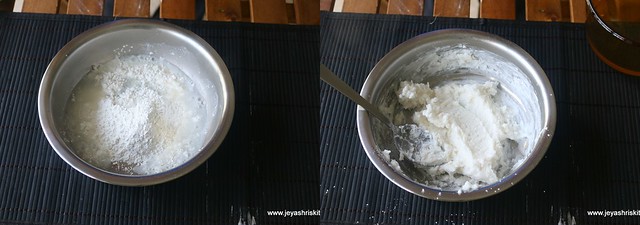
- When it is warm enough to handle grease your hands with sesame oil and knead it well.
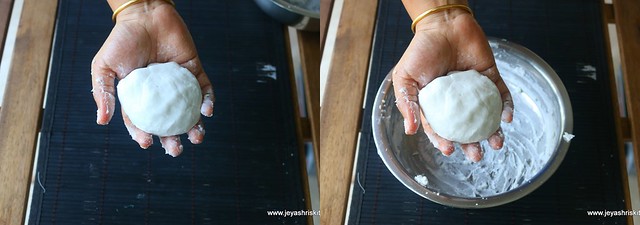
- If it is dry add little more hot water to this and mix well.
- Keep it covered all times.
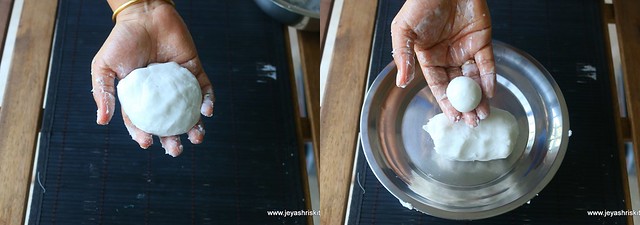
Method: 3
- This method i have given in my elai kozhukattai post.
- Mix water to the flour and make it thin as a dosa batter.
- In a pan add flour mixed with water and add salt and sesame oil.
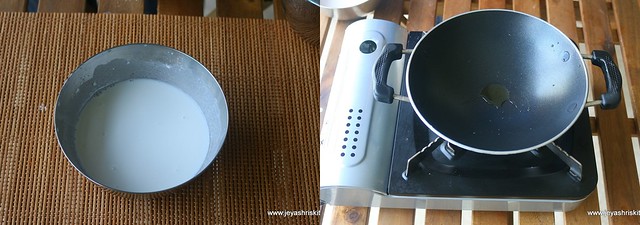
- Mix this well with a spoon and keep the flame low and cook.
- Cook till the water evaporates and the dough comes to a whole mass.
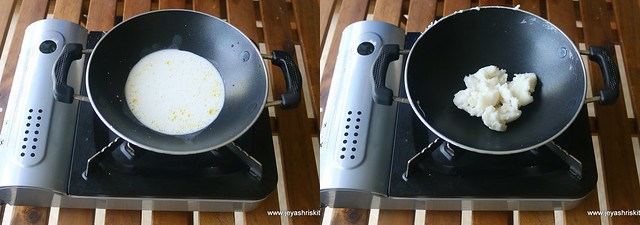
- When it is not sticky switch off the pan.
- When it is warm knead into a smooth dough. While kneading grease your hands with sesame oil.
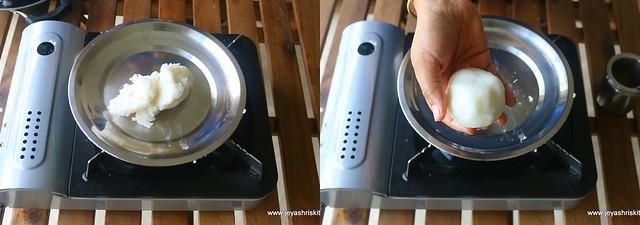
- soft dough is ready. Cover it till you make the modak | kozhukattais.
Method 4: (told by my friend Mythili)
- Soak 1/2 cup of raw rice in water for 3 hours.
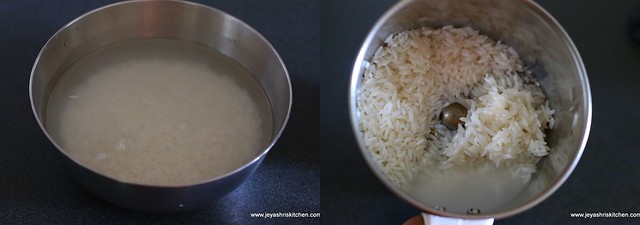
- Grind this in a mixie into a very nice batter . Ensure the ground should be very fine without any granules.
- Let the batter be in the consistency of dosa batter.
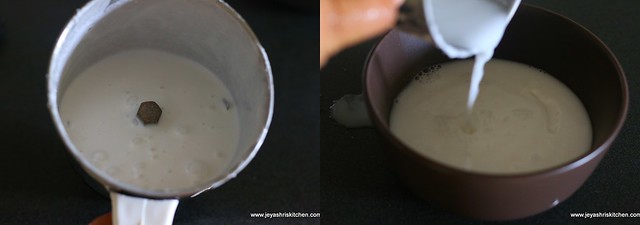
- In a pan add 1 cup of water and add salt and sesame oil.
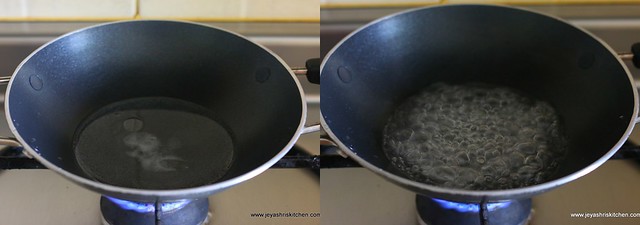
- When it comes to a rolling boil add the ground batter to this.
- Mix well using the back of a ladle without any lumps. This as such won't form any lumps.
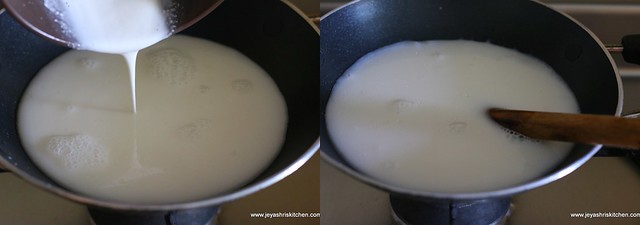
- When the water evaporates and the batter comes to a dough consistency.
- Switch off the flame and once it is warm you can start making the modakams.
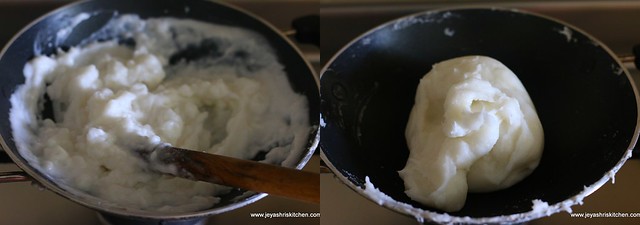
Tips for making kozhakattai maavu:
- Always ensure that the dough is cooked well. Else the soppu | outer will break when you make the modakams
- Always keep the dough covered, else it will become and you will end up in cracked kozhukattai covers.
- If you can make balls with the dough without any cracks then it is in the right consistency.
- Do not keep the jaggery poornam stuffed without steaming for along time. It will start oozing out water.
- Keep the prepared modaks covered ,else it will become dry.
- You can add 1/4 cup of milk to the water while making kozhukattai (in all methods)
- This will make the kozhukattai more whiter and soft.

Hi Jeyashri.. which of the 4 above methods according to you is the best? which did you think was easier to make and did not break?
ReplyDeleteAccording to me all the 4 methods will turn out perfect without break, if you are a beginner, then go for method 2 or 3
DeleteThanks jeyashri. . Ur blog is really so useful
DeleteVery nice & useful one. In method 2 flour is not getting cooked. U r pouring the boiling water on the flour. Is it Enough? Should flour be not Cooked like other methods.
ReplyDeleteVery nice & useful one. In method 2 flour is not getting cooked. U r pouring the boiling water on the flour. Is it Enough? Should flour be not Cooked like other methods.
ReplyDeleteYes since the water has boiled nicely it is enough. Yes it will be cooked.
DeleteHi mam wht s d water proportion for method 1 and 2
ReplyDeleteIt varies from flour to flour. Roughly if you are using half cup flour keep 3/4 cup to 1 cup water
DeleteHi mam wht s d water proportion for method 1 and 2
ReplyDeleteVery Nice recipe.
ReplyDeleteI also checked one more interesting recipe churma modak . I will try both recipe very soon....
Hi, I am getting cracks when giving a shape to it..whar should I do
ReplyDeleteHi keep the dough covered all the time. Sprinkle hot water on the dough and grease your hands with sesame oil and knead again to get a crack free dough.
DeleteHi, I tried both methods 1 and 2. The dough seemed to come right but after cooking the modak became so hard. What do I do?
ReplyDeleteIt's steamed for a more time, that's why it has become hard.
DeleteHi, I followed methods 1 and 2. The dough seemed right but after cooking it became hard and once it cooled it was very hard. What do I do!
ReplyDeleteHi, Sprinkle some hot water to the dough and then knead again by greasing your hands with oil.
DeleteHi your recipes are very nice. I tried some recipes and comes out vey well. Thank you very much
ReplyDelete